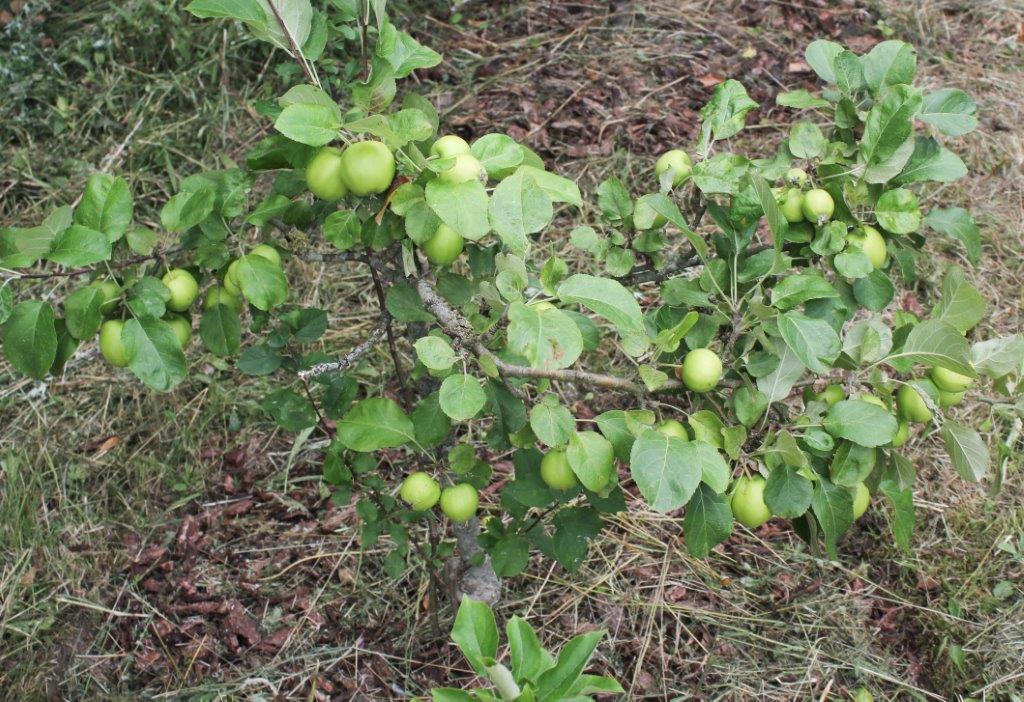Though my raspberries have been a disappointment this year, there has been a remarkable crop of apples – a great compensation. Some of the cordons are overburdened, but one of the most surprising is a ‘Claygate Pearmain’, shown in the picture, it’s cropped poorly for several years but now definitely needs thinning!

Early August is the last chance to thin apples, apples, pears and plums, it ensures individual fruit reach a decent size and prevents varieties like ‘Victoria’ plum from going into a cycle of biennial cropping – producing a heavy crop one year and nothing the next. It also allows light to reach the fruit to speed ripening. Thin Apples and pears so they are about a hand’s width apart; plums should be two to three inches apart. Ideally thinning should be completed by mid July, after fruit trees have naturally aborted some of their crop but it is still not too late. Use a pair of secateurs or your finger and thumb, taking care not to break off the fruiting spurs. When thinning apples, remove the ‘king fruit’ at the centre of the cluster, that is often mis-shapen, unless you only have a few apples on the tree.
It may seem strange to be thinking ahead to winter but now is the time to start sowing winter vegetables so they are well established before the cooler weather arrives. During the first part of the month direct sow Chicory, endive, land cress and oriental salads like komatsuna and Pak choi. Later in the month sow lettuce like ‘Valdor’, ‘Winter Density’ or ‘Marvel of Four Seasons’ salad onions, rocket spring cabbage and winter radish.
Remember to make arrangements for someone to look after your houseplants while you’re on holiday. Ideally ask a neighbour who’s keen on gardening. If your kitchen draining board is away from scorching sunshine, or you have a window blind to provide some shade, group your houseplants there, write down the instructions clearly on a piece of paper or stick them on the side of each pot and take them through each plant’s individual needs before you leave. Alternatively, stand them all on an old towel or capillary matting with one end dipped in a sink full of water to act as a wick; single plants can be watered using a wick of a cotton shoelace or a piece of wool. They can also be put outdoors in a shady spot outdoors – houseplants enjoy a holiday too and can stand outdoors once the danger of frost has passed until just before the first frosts of autumn.
I must mention one plant that is flowering in my garden at the moment –it’s a perfect plant; Roscoea purpurea f. rubra – I’m going through a Roscoea’s phase having bought several species like R. beesiana, R. cautleyoides. They are generally hardy, sun and part shade loving members of the ginger family that thrive in humus rich soil and should be planted about 15cm deep. The flowers are brick red, unlike the rest of its relatives whose flower colour ranges from yellow, to dark purple. If you are the kind of person who likes growing something a little different, do find a space for these handsome plants.
Happy Gardening! Matt


